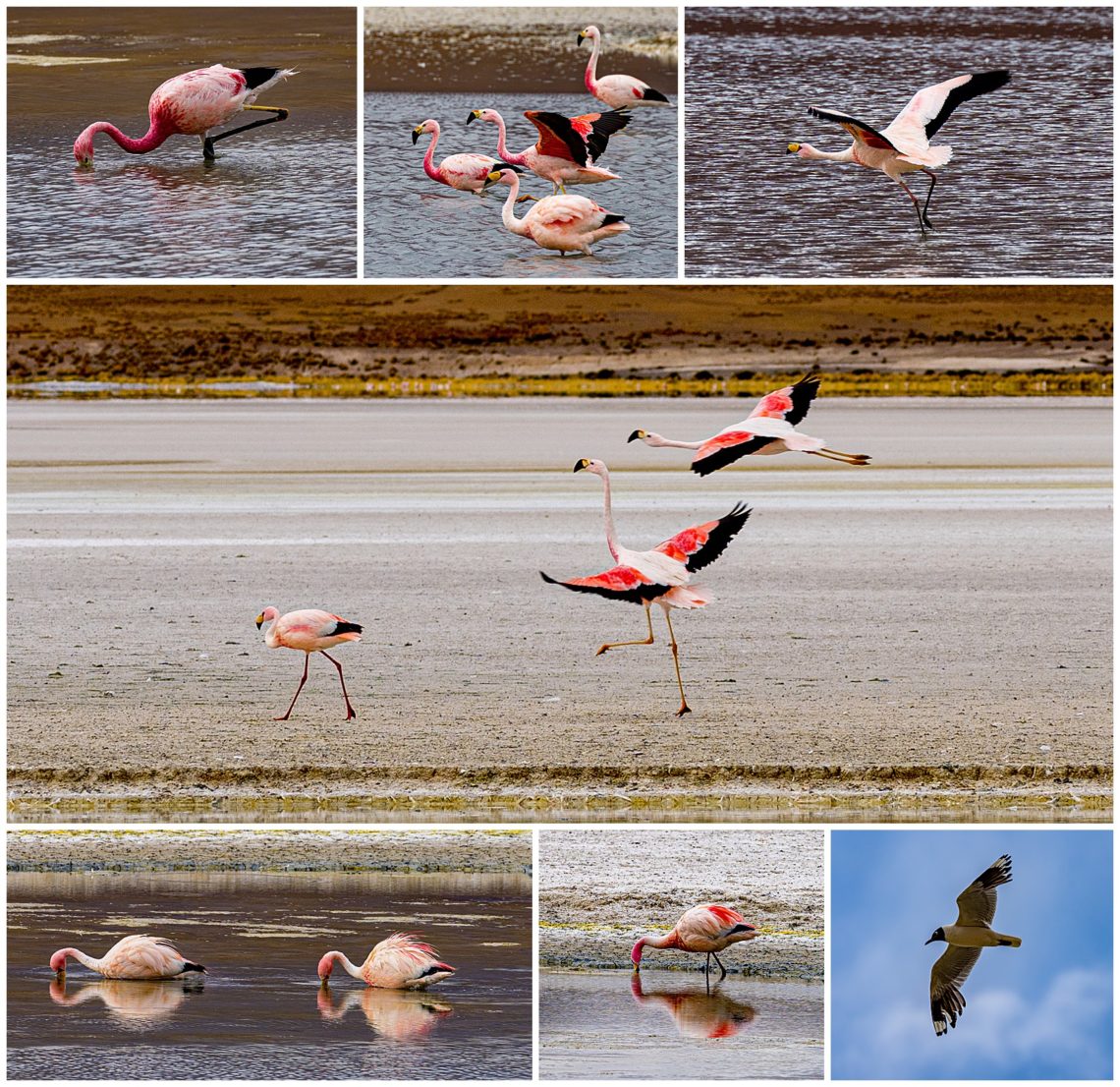
When arranging our trip to Bolivia, we had two major photographic goals — the mirror scenes on the salt flats, and flamingos in the high desert lagoons. We never got the mirror images we envisioned, due to the current drought in Bolivia. Flamingos though, were a different matter!
We have chased flamingos across many countries. We were always promised flocks of flamingos, but when we arrived, they had just left, or not yet arrived, or were missing due to climate changes. Finally, in Bolivia, we saw more flamingos in one place than we ever imagined!
We saw a few in various lagoons, mostly far away with barely enough camera pixels to show a usable photo. Then we hit three lagoons with an amazing number of flamingos that we could approach close enough to get some reasonable images. On one of the lagoons, I was even able to put up my drone and see them from a few feet away (my new DJI Mini 3 Pro drone is so quiet that you would not know if it was flying 5 feet from you).
Above are just a few of the hundreds of photographs we took of individuals or small groups of flamingos on these lagoons. Occasionally other birds would join the feast too (lower-right).
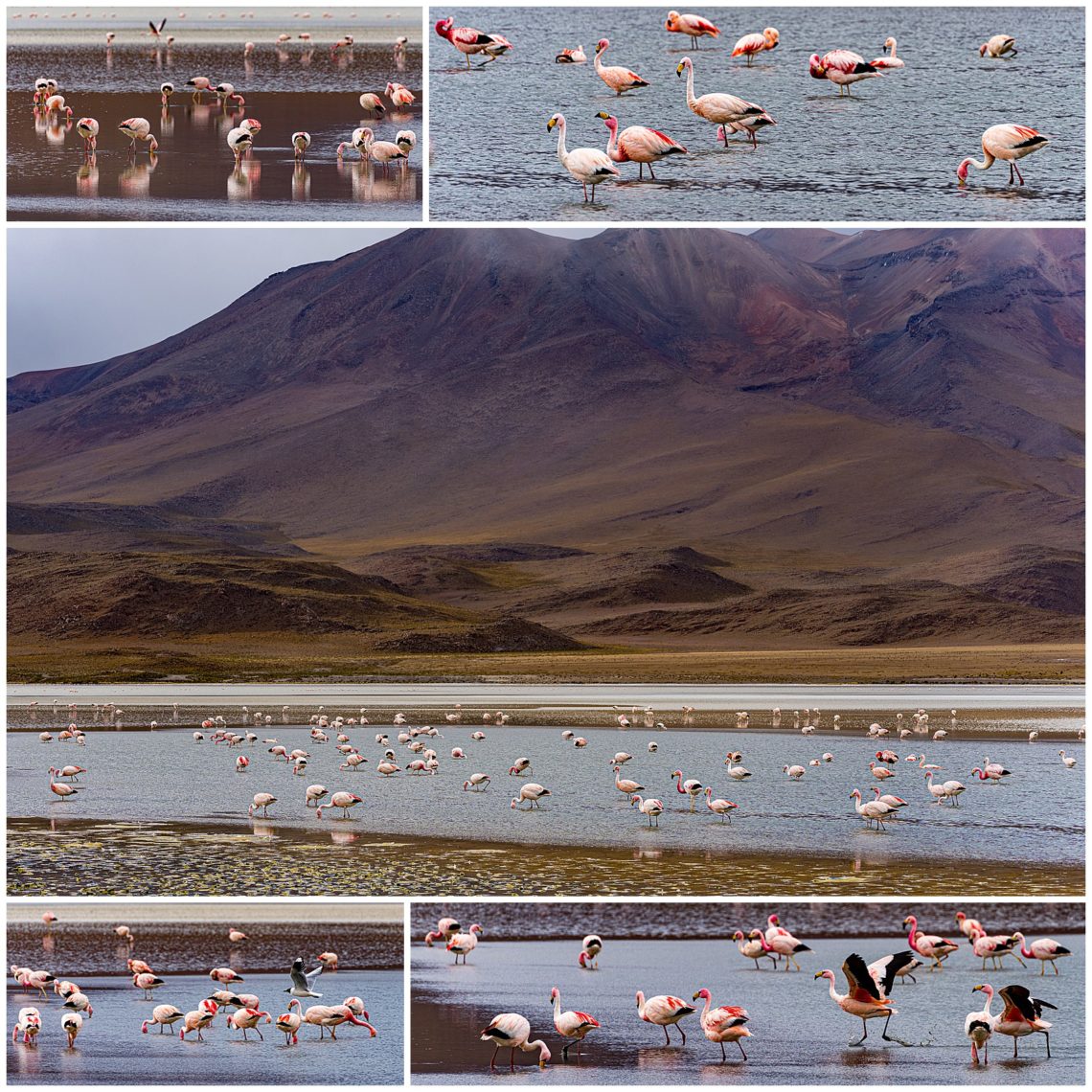
Most of these lagoons existed in magnificent regions where it was easy to forget the birds, and instead focus on the surrounding landscape (center). Since we had really hoped to shoot flocks of flamingos though, we mostly kept our focus there, and above shows a few of the lakes full of the pink birds that we saw.
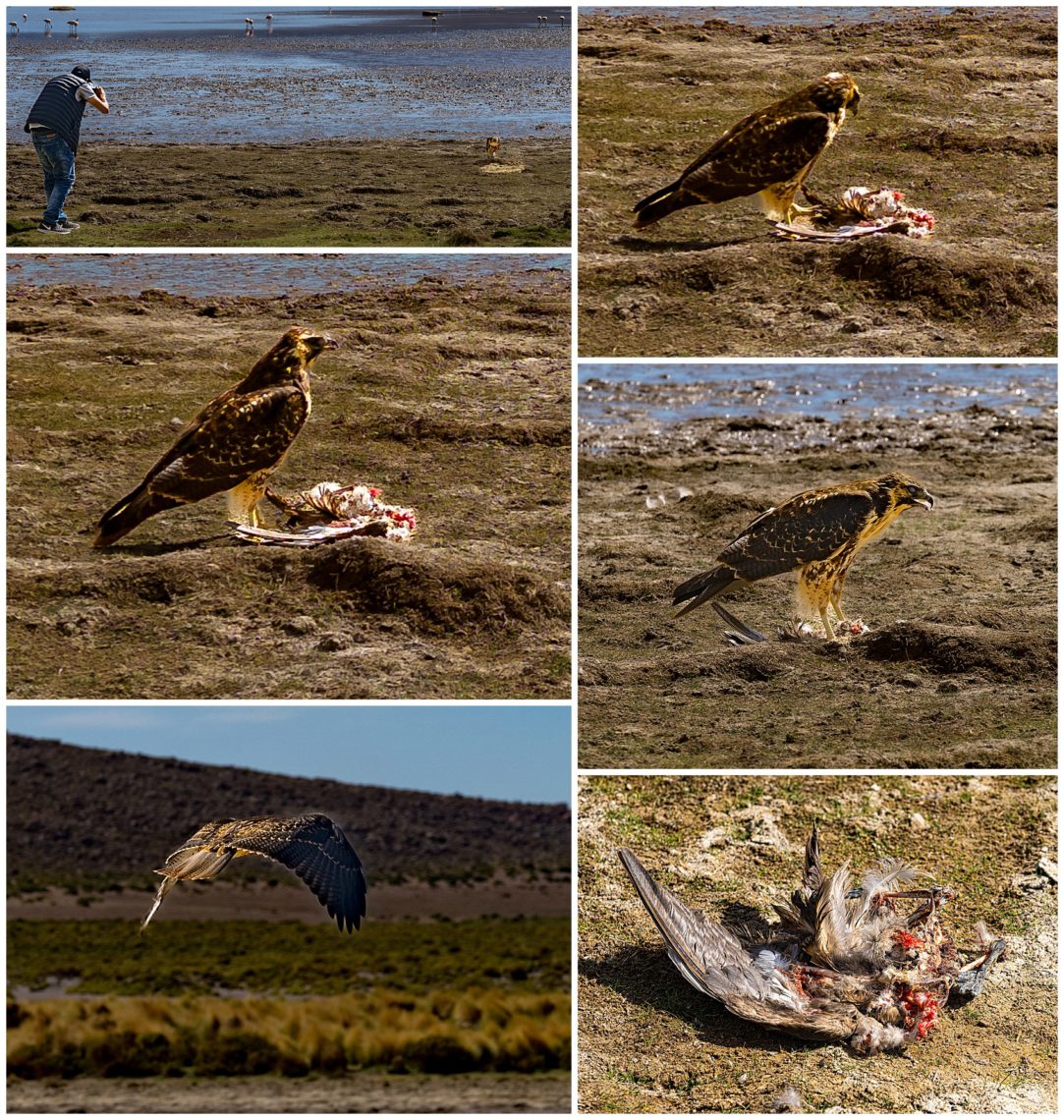
At one point, we saw an eagle on the side of a lagoon that had caught a bird and was eating it for lunch. We were able to walk to within about 10 feet of the bird, and my drone was able to get within 5 feet to capture images of his meal. Eventually we approached a bit too closely, and he flew away (lower-left), leaving the limited remainder of his meal behind (lower-right)
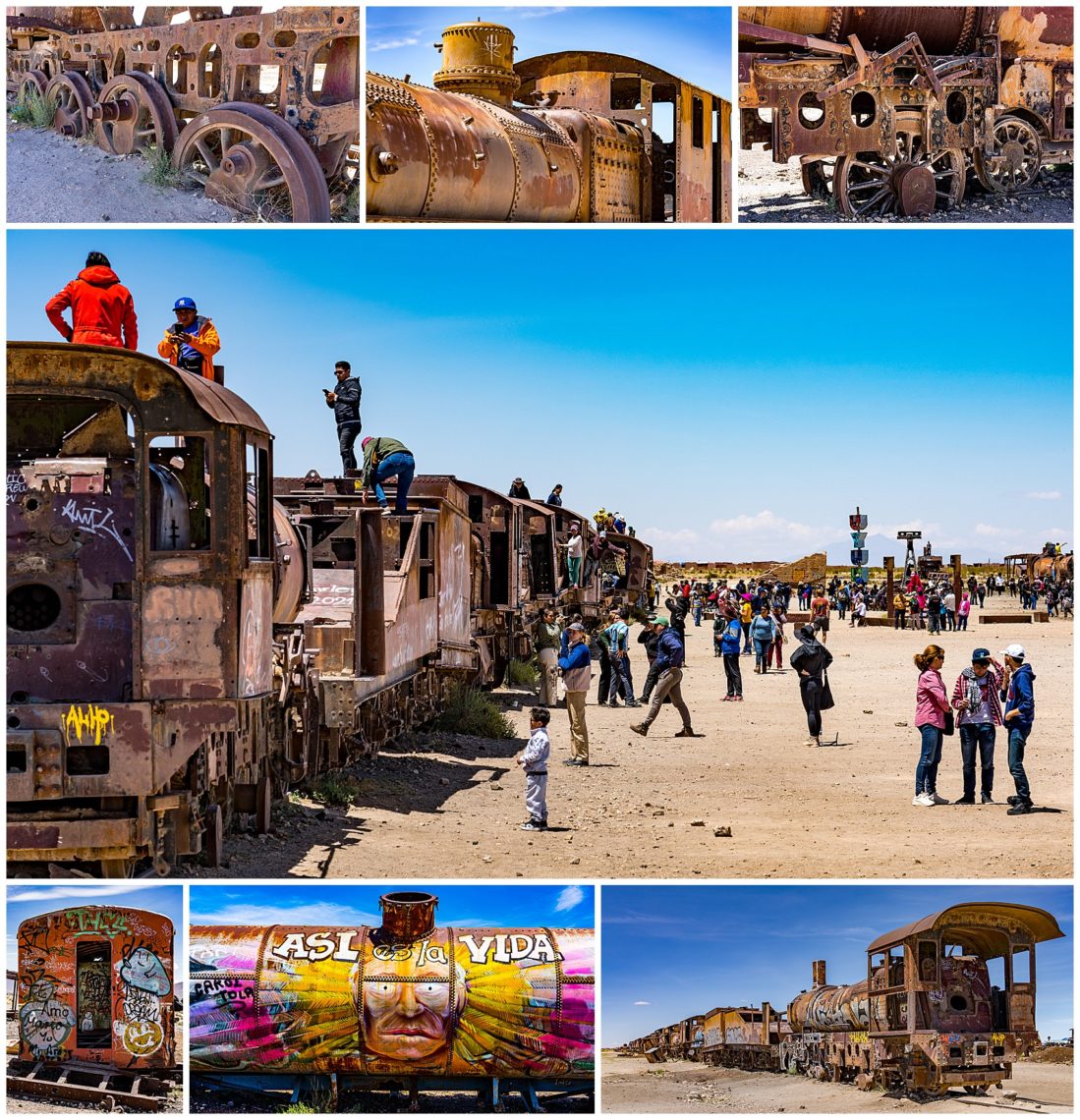
One of our more interesting stops in High Bolivia was the Train Graveyard of the Uyuni Salt Flats. For decades, this area was a major world supplier of Bauxite. Recall the “20-mule train” commercials we saw in the 1950s? This was the source, and still is today to a very large extent. This “graveyard” is where the old locomotives were dumped when transportation moved from coal to oil and the old engines were no longer relevant. There are also a few bauxite cars here that were damaged and brought here to be disposed of.
As can be seen in the (center) photo, this is a popular tourist stop for photographs. Fortunately, our guide, Alvaro (to be seen in future story block below) rushed us here before the tourist crowd arrived, and then showed us places in the area that were photographically interesting, but not crawling with other tourists. All the other photos on this block were shot in that area, blissfully empty of others. We only saw the crowds in the center image when leaving the area to return to our car.
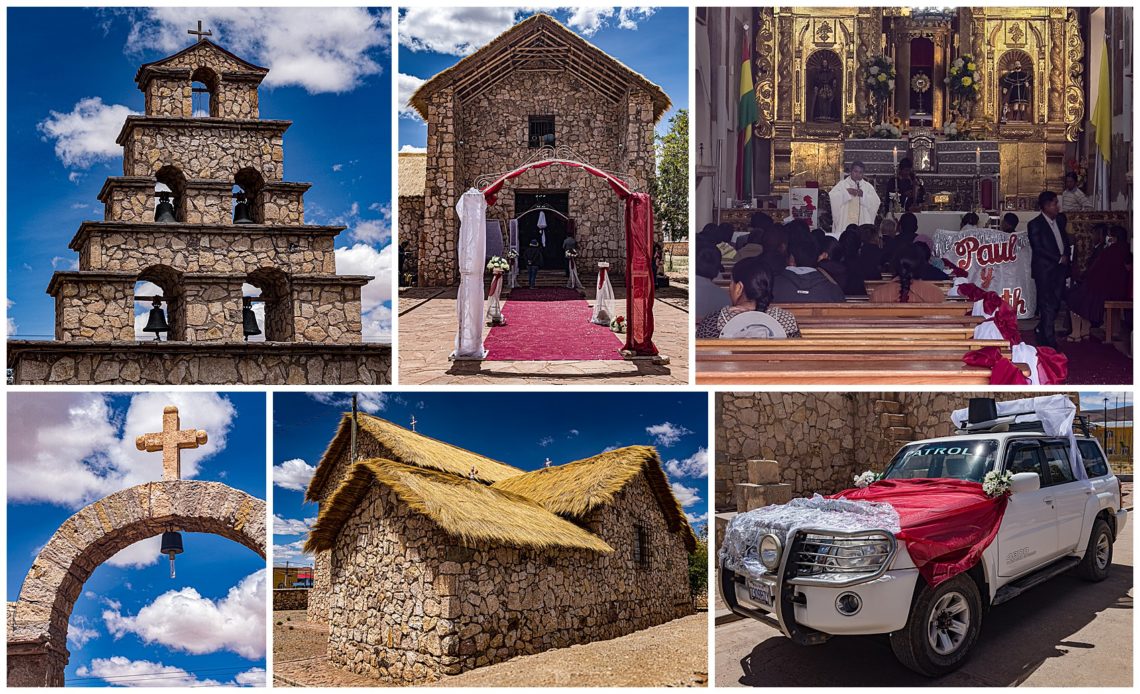
We had lunch in the small town of San Cristobal. We had told our guide we had never eaten Llama, so that was served to us. Unfortunately it was overcooked, and tough. Alvaro (our guide) agreed with that assessment…
After lunch, we wandered around town, and found a wedding in progress in a small church. We were told that this was rather rare, since it was a small town, and many people chose to go to a more exotic (and expensive) location for their weddings.
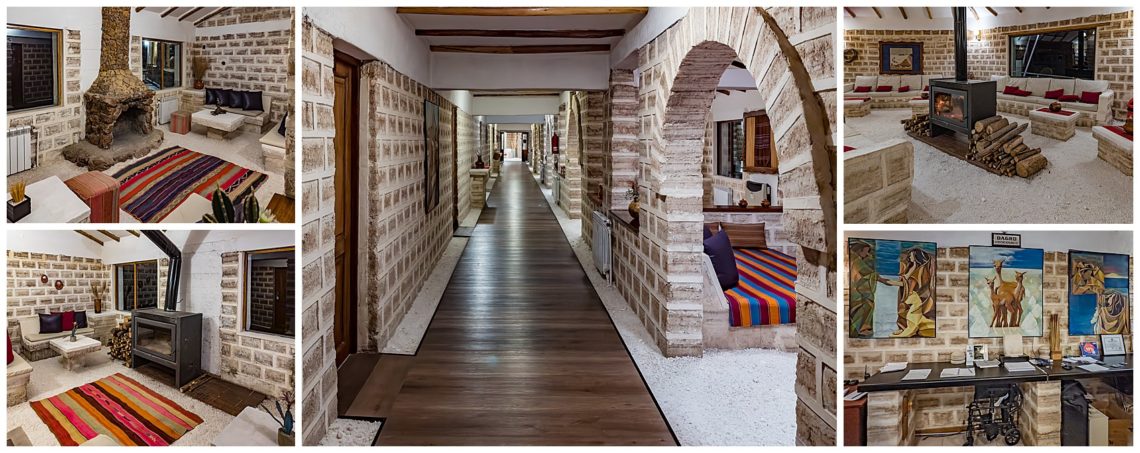
Finally we checked into one of the famed salt hotels, Hotel de Sal Luna Salada. The entire hotel is made of salt, and is located at 12,000 feet elevation. The hotel was a significant surprise to me. It was elaborate, in the style of many upscale hotels we have stayed at around the world. Floors were salt crystals, though most (not all !) were covered with wood pathways (center). There were numerous comfortable meeting rooms off the main hallways (left column and upper-right), and the registration office had some very nice art hanging on the walls (lower-right).
The room was comfortable, well laid out for computer and office use, though internet access was limited (reasonable in the middle of a 4,000 square mile salt flat !). There was an in-room heater, though we never used it, since the blankets were so comfortable. To my surprise, this is a hotel I would recommend to anyone staying in this area!
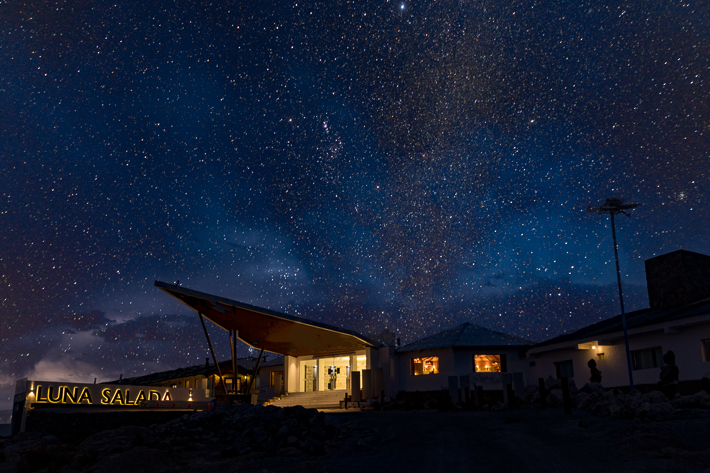
We had scheduled two nights to go out and do some star shooting. Our guide was very cooperative and willing, but unfortunately the weather was not. From the night we planned our first night out until the end of our trip, the sky remained completely overcast.
Fortunately, I went outside our hotel the first night we arrived. Between the low temperature of a High Desert night, and the howling wind, I nearly lost my fingers from frostbite! But I did manage to capture exactly one decent night sky photograph, as shown above, with our hotel in the foreground.